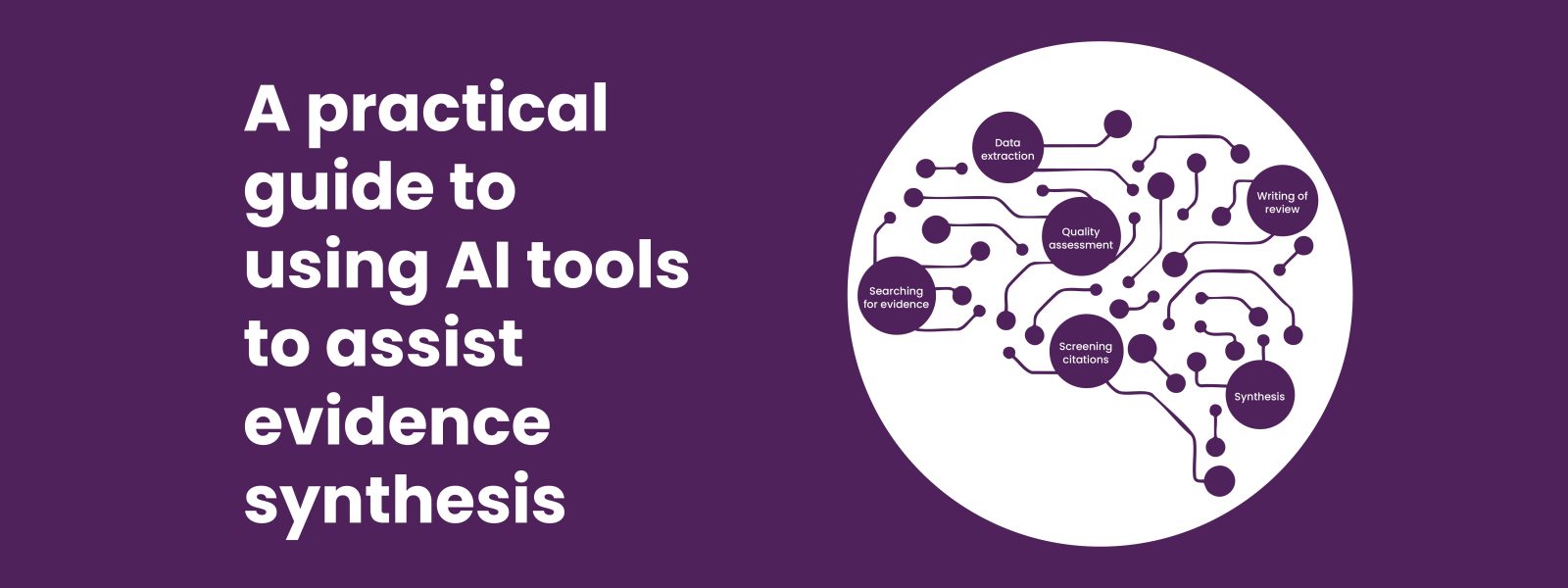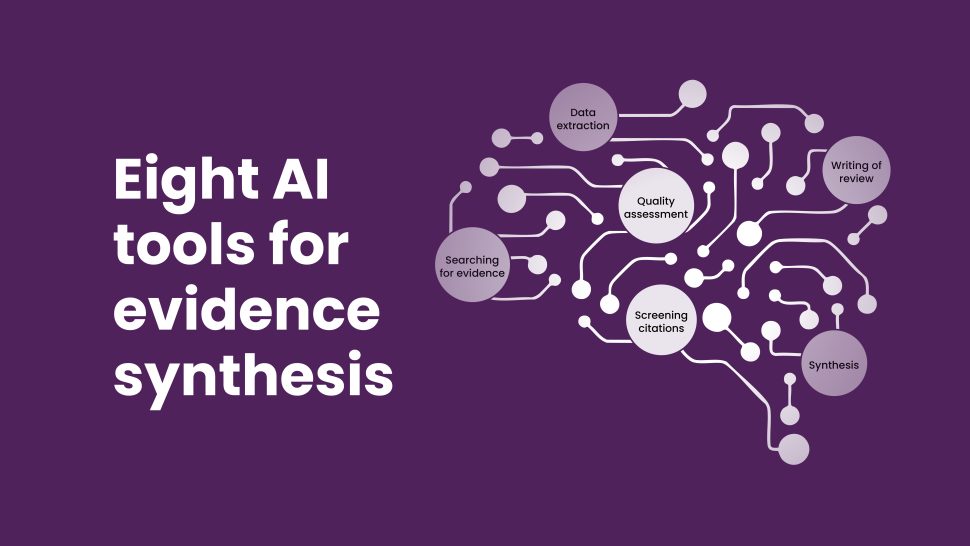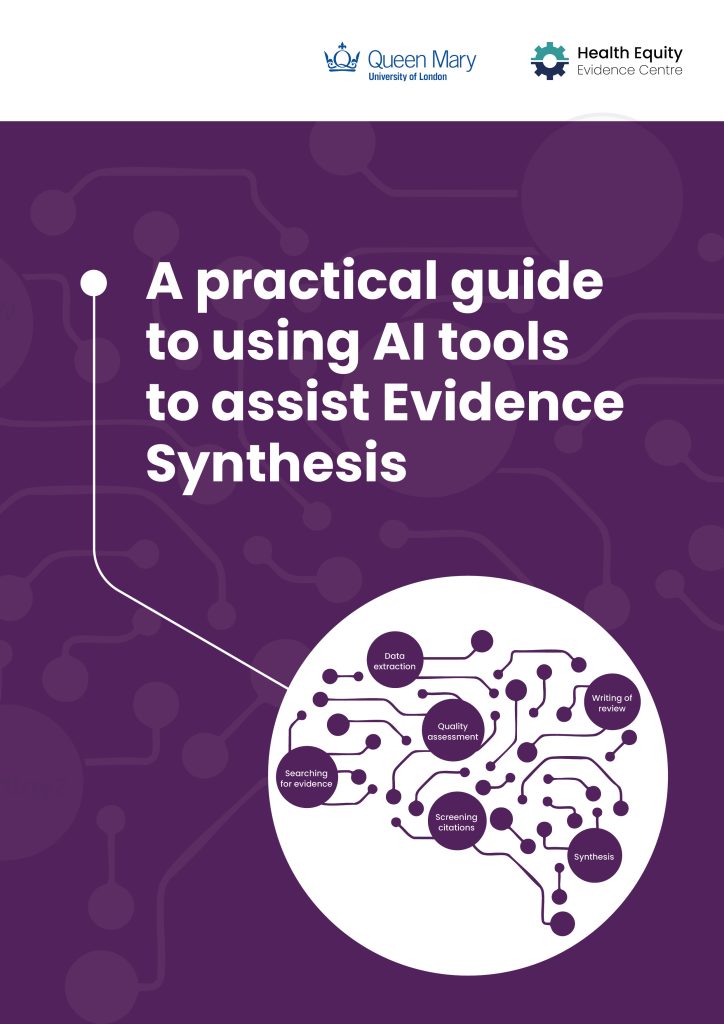A practical guide to using AI tools to assist evidence synthesis

This practical guide supports researchers in using AI tools to assist with evidence synthesis while maintaining rigour and quality. Drawing on real-world case studies and research conducted by the Health Equity Evidence Centre, it provides practical advice on integrating AI responsibly across all stages of the synthesis process.
AI tools are changing how researchers undertake evidence synthesis. There are now tools which can automate every stage of evidence synthesis – from generating search terms to extracting data. With so many tools available and the rapid expansion of generative AI, researchers can find it difficult to know where to start and how to harness of benefits of AI while maintaining rigour and quality.
At the Health Equity Evidence Centre, we have been using AI for priority screening in the creation of living evidence maps using EPPI Reviewer software and have recently finished a research project with the Health Foundation on the use of AI for evidence synthesis. In this guide we provide tips with practical examples of how to integrate AI into evidence synthesis without compromising quality.
Related resources

Eight AI tools for evidence synthesis: Case studies and comparisons
This tool presents an independent assessment of eight AI tools designed to support evidence synthesis. Each case study summarises the tool’s capabilities, research evidence, and HEEC’s practical experience to guide researchers in selecting the most appropriate solutions for their reviews.

Faster, lighter, better?
Introducing two new practical resources to explain how artificial intelligence can support evidence synthesis

